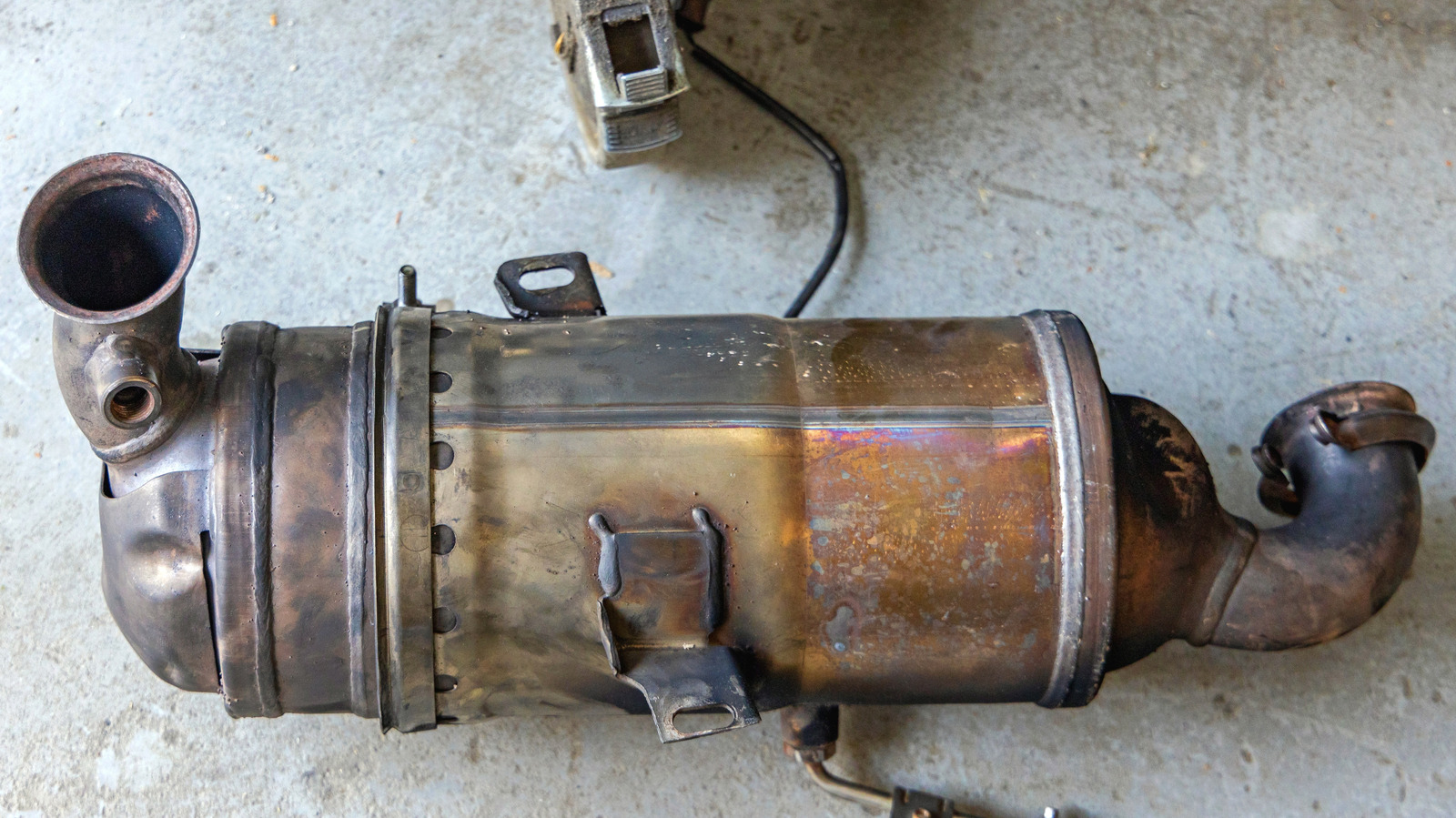Diesel trucks are built tough and can last up to five years without issue. However, I've worked on trucks — both professionally and in my garage — for a decade, and I've seen how long they can last when you take them to a mechanic for regular maintenance . I've also seen how quickly they can fail without proper maintenance.
In fact, most trucks I've worked on have come emitting dark smoke or lighting up the dash with trouble codes. And while there are many reasons why cars have these issues — like a dirty fuel injector and a failing air filter — the most common culprit is the DPF for diesel trucks. The DPF traps and captures soot and ash produced during combustion, and that might sound helpful — after all, it helps meet emissions demands — but only if you keep it clean.

Diesel trucks are designed to clean the filters actively while driving, through a process called regeneration. Over time, ash will build. If this happens, your truck's performance will take a nosedive, and you might notice a loss of power or more fuel consumption.
So, how do you keep your truck's DPF in top shape? Can you do the work yourself? Let's break down how to get it done right the first time without much hassle. Cleaning should be relatively straightforward if you decide to give your DPF a quick fix without professional help. Most trucks I've worked on have their DPFs tucked inside the exhaust system.
So, you'll need to remove the filter by disconnecting the bolts. Just ensure you carefully place the rings and nuts somewhere you won't lose them — like a toolbox. Once the filter is out, I recommend that you inspect it thoroughly.
Is it heavily caked with ash buildup? Or does it seem like it's slightly soiled with soot? Primarily, the grime buildup level will hint at how aggressive you need to be with cleaning. Next, grab a high-pressure cleaning cabinet and blow compressed air into the DPF. Ensure you blow the air from the clean to the dirty side.
You also want to do this in a ventilated area — the amount of soot and ash coming out might harm your health. While compressed will help get rid of debris, it will not eradicate clinging soot particles. So, you will want to rinse the filters with heated water.
With a hose or faucet connected to a high-pressure nozzle, spray water into the filter from both sides. Once the water exiting is clear, let the DPF dry, then reinstall it onto the vehicle. When it comes to vehicle ownership, the list of expenses can seem never-ending — in addition to monthly payments, there's insurance, fuel, and more that can all add to the overall bill.
And while you can opt to overlook the maintenance part (especially if you are tight on cash, time, or both), you could end up with more costly repairs. With that in mind, it's always crucial that you not only know how to clean your filters, but also when. Wait too long, and you could end up with an unreliable truck or expensive repairs.
One of the easiest ways to know when to clean your DPF filter is by checking the warning light on the dashboard. That little check engine light might indicate that your DPF is the culprit, especially if you have skipped maintenance. Dark or thick smoke puffing out of your exhaust system could also be the more obvious indicator of an airflow blockage.
If you can see unburned soot, it implies that your DPF is clogged or damaged. Unpleasant smells, like a diesel-like or rotten egg smell inside the cabin may also result from a DPF problem..
Technology

How To Clean The DPF Filter On Your Diesel Truck

For diesel workhorses, cleaning out the DPF filter regularly helps keep the truck running clean, but a dirty DPF could severely impact performance.















